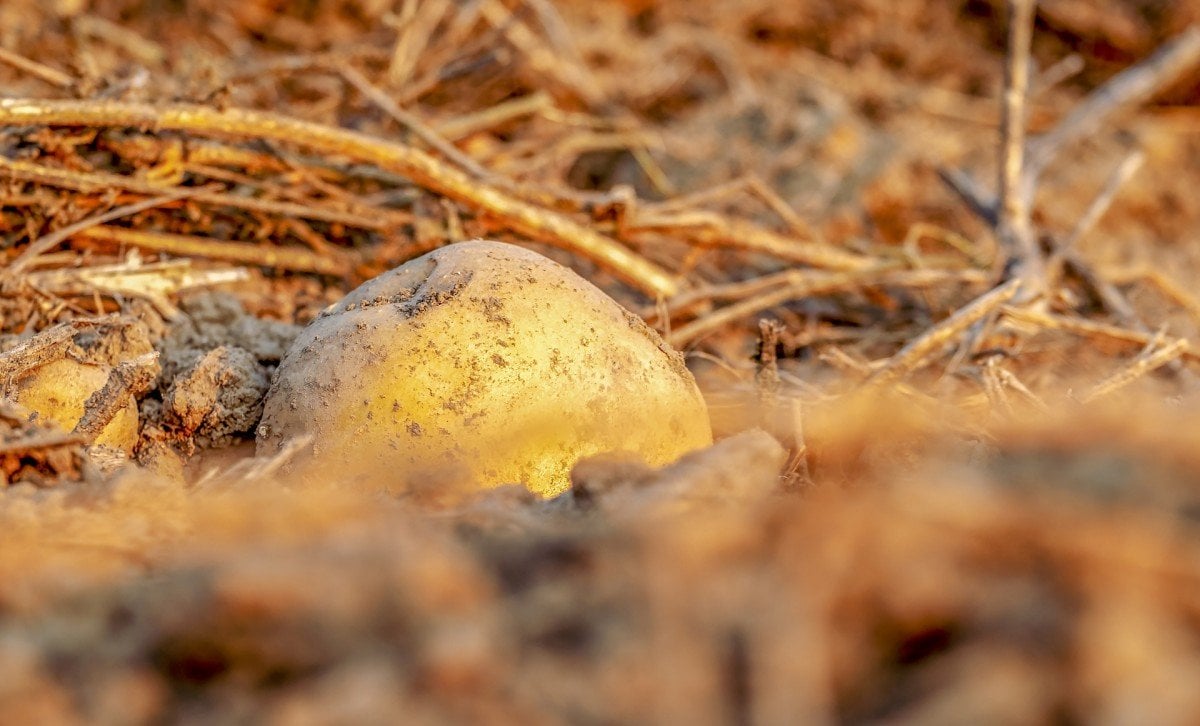
Whether as boiled, salted or fried potatoes, processed to fries or as chips – we Germans like them: the potato. About 60 kilograms is the average per capita consumption per year in our country. The potato is also one of the world’s most important staple foods alongside corn, rice, wheat and manioc. And until now there has always been enough supply, so we didn’t have to worry about the tasty tuber.
Potatoes Don’t Like Warmth
But what could definitely become a topic in the future: Potatoes do not like warmth during growth. If the temperatures are too high, the plant will produce significantly fewer tubers or sometimes no tubers at all. Biochemists from the Friedrich Alexander University Erlangen-Nuremberg (FAU) have now taken a closer look at this phenomenon. In their laboratories, they exposed the potato plants to temperatures of up to 29 degrees during the day and temperatures of about 27 degrees at night.

And already the plant switched over to a different growth program, so to speak: It formed more green shoots and leaves, but fewer to no tubers. In addition: The few tubers had a lower starch content and germinated faster – they were therefore less nutritious and spoiled more quickly.
The Reason for This is a Small Ribonucleic Acid
In addition, the Nuremberg scientists researched why this occurs:
Until now, the mechanism that prevents tuber formation under heat was not known”, explains Prof. Dr. Uwe Sonnewald, head of the Department of Biochemistry.
The highest yields of potatoes can be achieved at moderate temperatures – around 21 degrees Celsius during the day and 18 degrees at night are ideal for tuber formation. At these temperatures and the right length of day, a tuber-inducing protein called SELF-PRUNING 6A (SP6A) is formed in the leaves. This signals the plant to form tubers in order to be prepared for cold periods. At lower temperatures it is inactive. However, when temperatures rise, it blocks the formation of SP6A and thus tuber growth.
Together with his research team, Sonneberg has now identified a small ribonucleic acid (RNA) consisting of about 19 nucleotides (building blocks of nucleic acid) that regulates tuber formation depending on temperature.
Successful Elimination of RNA
In a next step, the scientists succeeded in switching off this small RNA. Once again, they exposed their potato plants to high temperatures in the greenhouse. The result: tubers of good quality were produced even at temperatures of more than 29 degrees and 27 degrees respectively.

Our results offer the chance that we will still be able to grow potatoes in the future when temperatures rise”, says Sonnewald.
Next, the researchers want to test the potato plants under field conditions and see whether the plants will be able to withstand the heat under real conditions. However, in view of climate change, the result is already an important contribution to securing crop yields in the future. The research work was recently published in the journal Current Biology.








